It is difficult to establish the birth of modernism. Most often ‘modern’ is associated with twentieth century design. We tend to think of early examples by designers such as Charles Rennie Mackintosh, Josef Hoffman and Gerrit Rietveld in the years prior to the First World War. In reality, the seeds were planted as early as the mid 1800s with particular designers such as Christopher Dresser and Owen Jones, creating works which sharply stood out from the trends of the day.
Modernism wasn’t a single readily identifiable style, but rather a set of ideas threading together a variety of styles and movements from various countries. Overall, it rejected decoration in favor of abstraction. It streamlined form and pared it down to the essence. But more importantly, it believed in the power and potential of the machine. Designers worked with industrial advancements to help change the world.
Design reform also combined two revolutions of the nineteenth century: industrial and romantic. Design reformers believed the laws of beauty were rooted in nature and a unitary world. Most designers believed that their designs had the power to transform society. That reform could create a sense of social utopianism. Proponents sought to bring forth better materials and aesthetic quality of life for the majority through better design.
(Click the Read More Link for the rest of the article)
Christopher Dresser (1834-1904) can be considered the father of modern design. Like William Morris, he believed that beautiful design should be available to everyone; however, unlike Morris, he thought that mass production was the best way to achieve that. Dresser’s designs looked forward and not to the past as Morris’ did.
Christopher Dresser was Europe’s first modern industrial designer. In fact, Dresser argued the merely imitative or naturalistic and realistic portrayal was the lowest form of art -- the highest was conventionalized forms found in nature delineated and stripped down to the purest form. He believed in an aesthetic that would dominate art, architecture and design in the first half of the twentieth century: the notion that the highest art was the visual representation of an idea that could not be seen.
During WWII, an entirely new design language emerged -- one which dominated postwar design and changed the original intentions of European artists, architects and designers. Many of these fled during the war to practice in America. The dream of a utopian design changed. Design for all was now a choice for the consumer. Product over the function became the reigning principle.
Then a new generation of individual designers separated themselves and created art furniture and one of kind pieces. They rejected mass production and modern materials. They fashioned a new type of expression, one that went against the dehumanizing result (they felt) of the machine. Instead, they celebrated the natural qualities of wood and metal but in novel ways -- marrying new ideologies with traditional materials to create new forms. These limited production designs were highly sought after in their days by tastemakers and movie stars. And they have enjoyed a resurgence in popularity in the past decade.
Christopher Dresser led the way to modernism. A pioneering reformer, designer and theorist, he was an innovator. Prolific and proficient, he influenced all who came after him by forging a unique and unprecedented body of work.
Modernism wasn’t a single readily identifiable style, but rather a set of ideas threading together a variety of styles and movements from various countries. Overall, it rejected decoration in favor of abstraction. It streamlined form and pared it down to the essence. But more importantly, it believed in the power and potential of the machine. Designers worked with industrial advancements to help change the world.
Design reform also combined two revolutions of the nineteenth century: industrial and romantic. Design reformers believed the laws of beauty were rooted in nature and a unitary world. Most designers believed that their designs had the power to transform society. That reform could create a sense of social utopianism. Proponents sought to bring forth better materials and aesthetic quality of life for the majority through better design.
Toast Rack. Christie's, London: July 8, 2009. Estimate: £600 - £900; Realized: £2,250
(Click the Read More Link for the rest of the article)
Tea Pot. Christie's: London: December 12, 2007. Estimate: £500 - £1,000; Realized: £3,750
Christopher Dresser (1834-1904) can be considered the father of modern design. Like William Morris, he believed that beautiful design should be available to everyone; however, unlike Morris, he thought that mass production was the best way to achieve that. Dresser’s designs looked forward and not to the past as Morris’ did.
Sotheby’s London: May 4, 2006. Estimate: £20,000 - £30,000; Realized: £42,000
Christopher Dresser was Europe’s first modern industrial designer. In fact, Dresser argued the merely imitative or naturalistic and realistic portrayal was the lowest form of art -- the highest was conventionalized forms found in nature delineated and stripped down to the purest form. He believed in an aesthetic that would dominate art, architecture and design in the first half of the twentieth century: the notion that the highest art was the visual representation of an idea that could not be seen.
"Propeller" Vases (for William Ault). Sotheby's, London: March 20, 2008. Estimate: £3,000 - £4,000; Realized Price: £3,750
During WWII, an entirely new design language emerged -- one which dominated postwar design and changed the original intentions of European artists, architects and designers. Many of these fled during the war to practice in America. The dream of a utopian design changed. Design for all was now a choice for the consumer. Product over the function became the reigning principle.
Then a new generation of individual designers separated themselves and created art furniture and one of kind pieces. They rejected mass production and modern materials. They fashioned a new type of expression, one that went against the dehumanizing result (they felt) of the machine. Instead, they celebrated the natural qualities of wood and metal but in novel ways -- marrying new ideologies with traditional materials to create new forms. These limited production designs were highly sought after in their days by tastemakers and movie stars. And they have enjoyed a resurgence in popularity in the past decade.
Watering Can. 1876. Collection of the Moma
Christopher Dresser led the way to modernism. A pioneering reformer, designer and theorist, he was an innovator. Prolific and proficient, he influenced all who came after him by forging a unique and unprecedented body of work.
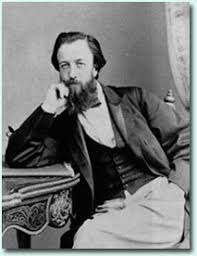
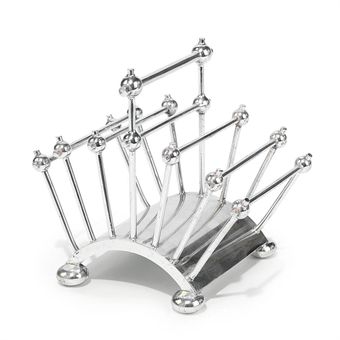
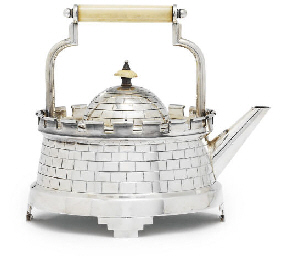
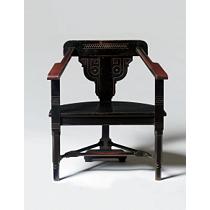
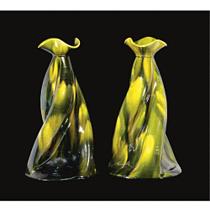









Paul Shutler Said,
Soodie,
Isn't it a shame though that I have a dozen reference books on Dresser, Hoffman, Mackintosh and Rietveld, yet only one on Owen Jones the man who preceeded them all and who's theories run though all their veins.
Jones died in April 1874, in May 1874 an emergency committee was convened to stage an exhibition of his life works at the 1874 London Internatioal Exhibition, Dresser and W. Burges were both on the commitee.
They memorialised the man thought most responsible for improving British Design.
It's now the 21st century and my shelf contains just one lonely book on the man...I'll bet Dresser wouldn't be too impressed.
Paul
(from across the pond)
Posted on October 9, 2009 at 5:10 AM
soodie :: Said,
Hi Paul, so great for you to comment! I agree, when you isolate OJ's (I should rephrase that: Owen Jones) work it is fantastic, and then when you place his creative patterns with the unusual color combos within the context of his time, he becomes absolutely incredible. I show my students his work, and they still do not gravitate towards it. Everyone always loves Wm. Morris. Compare Jones fabric and wallpaper patterns next to the "it" interior designers of today... there is still no comparison.
Posted on October 12, 2009 at 5:23 PM